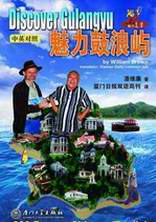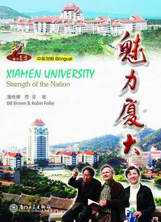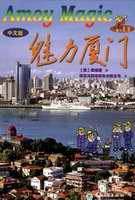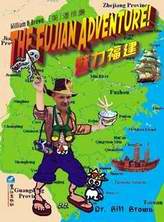![]() Click
to
Access
Click
to
Access
AMOY MAGIC SITE from
OUTSIDE China
![]() Click
to Access Amoy
Magic Site from
Click
to Access Amoy
Magic Site from
INSIDE
China ![]()
TRAVEL LINKS
![]() Xiamen
Xiamen
![]() Gulangyu
Gulangyu
![]() Jimei
Jimei
![]() Tong'an
Tong'an
![]() Jinmen
Jinmen
![]() Zhangzhou
Zhangzhou
![]() Quanzhou
Quanzhou
![]() Wuyi
Wuyi
![]() #1Fujian
Sites!
#1Fujian
Sites!
![]() Fujian
Foto Album
Fujian
Foto Album
![]() Books
on Fujian
Books
on Fujian
![]() Readers'Letters
Readers'Letters
![]() Ningde
Ningde
![]() Zhouning
Zhouning
![]() Longyan
Longyan
![]() Sanming
Sanming
![]() Putian
Putian
![]() Bridges
Bridges
![]() Travel
Info,
Travel
Info,
![]() Hakka
Roundhouses
Hakka
Roundhouses
![]() Travel
Agents
Travel
Agents
MISC. LINKS
![]() Amoy
People!
Amoy
People! ![]()
![]() Darwin
Driving
Darwin
Driving ![]()
![]() Amoy
Tigers
Amoy
Tigers
![]() Chinese
Inventions
Chinese
Inventions
![]() Tibet
in 80 Days
Tibet
in 80 Days![]()
![]() Amoy
Vampires!
Amoy
Vampires!
![]() Dethroned!
Dethroned!
![]()
![]() Misc.Writings
Misc.Writings
![]() Latest
News
Latest
News
![]() Lord
of Opium
Lord
of Opium
![]() Back
to Main Page
Back
to Main Page
![]() Order
Books
Order
Books![]() Xiamenguide
Forum
Xiamenguide
Forum
Note:
Please click thumbnails for larger photos
![]() Hills'
Photo Album!
Hills'
Photo Album!![]() Bio
of Jessie M. Johnston
Bio
of Jessie M. Johnston
Scanned from
The Ladies Repository, Sep., 1858
![]() Download
PDF File of "Mission Cemetery"
Download
PDF File of "Mission Cemetery"
![]() Dr.John
Otte's Last 10 Days
Dr.John
Otte's Last 10 Days
Note
from Original Document: The contents of this article have been
extracted for the Repository, by Dr. Wiley, from a forthcoming volume
by the same writer, on the Fukien Missionaries of Fuh-Chau.ˇŞEd. VOL. XVIIIˇŞ33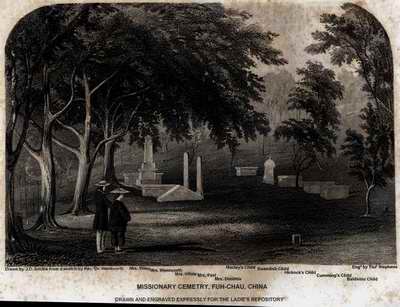
DR. WENTWORTH, one of our missionaries at Fuh-Chau, has sketched, and the artist has finely engraved for us, a beautiful picture of a far-distant spot, around which, to every lover of the Redeemer and of his cause, there gathers a melancholy interest. It is the cemetery of Fuh-Chau, where quietly sloop five precious American female missionaries, who counted not their lives dear unto them, if they might win Christ and be found in him. Let us retire to this beautiful and silent vale of death, and read its touching and inspiring history.
Fuh-Chau is one of the five cities of China opened to foreign residence and commerce by the treaties of 1842. It is the capital of Fuh-Kieng, one of the richest and most enterprising provinces of China, possessing a territory of 67,000 square miles, and a population of 16,000,000, of the most hardy and adventurous natives of the empire. Fuh-Chau, the provincial city, is situated about five hundred miles up the Chinese coast from Canton, and till recently was only accessible to the foreigner through the Portuguese lorchasˇŞ small, schooner-like crafts, owned and manned mostly by the Portuguese of Macao, and by which is conducted a lucrative, but dangerous and adventurous trade in conveying or guarding native junks along the Chinese coast, to preserve them from the attacks of native pirates, with which all parts of the China sea are infested. In the summer of 1851 we chartered one of these little vessels at Hong-Kong, and a voyage of eight days along the bold and barren coast of China, brought us to the outlet of the river Min. About three o'clock In the afternoon, while A clear sun poured its flood of golden light over the beautiful scenery which skirts the embouchure of the river, we suddenly tacked about from our course and bore into the river, winding our way through a picturesque group of islands called the "White Dogs" and "Five Tigers," which seem like savage sentinels guarding the entrance of the river.
The scenery of the Min inspires universal admiration. Travelers have frequently compared it to the picturesque scenery of the Rhine; but Americans find a better comparison in the bold scenery of the Hudson, which it equals in grandeur, and surpasses in the beautiful blending of rich lowlands, cultivated fields, and tributary streams. Sweeping along the winding river for about thirty miles through this enchanting scenery of towering mountains, terraced hills, cultivated fields, and quiet villages, all glittering in the light of a southern sun, softened by the rich verdure of tropical vegetation, we enter the beautiful amphitheater, skirted on all sides by irregular, broken mountains, under the shelter of which lies embosomed the city of Fuh-Chau. As we approach the city, the banks of the river on both sides are lined with boatsˇŞhundreds of small tarn-pans, or row-boats, and large vessels more permanently located, which serve as residences for their owners. These water residences are one of the striking features of Chinese life, and are found in all parts of the empire. The river population of Fuh-Chau must amount to several thousands, born, and reared, and spending their lives on these little boats. The stream is also occupied by hundreds of junks of all forms and sizes, from the massive, unwieldy vessels of Shantung to the neat, little, black-painted crafts of Ningpo. In the center of the river lies a large island called Tong--Chin, or "Middle lsland," connected with the banks of the river, on each side, by stone bridged, and densely covered with buildings, and occupied by busy, thriving multitudes, numbering several thousands. Several native official residences are found on this island, and formerly it was occupied by three mission families.
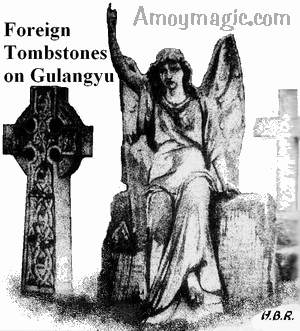 On
the south side of the river is a large suburb called A-to, divided into
several districts, and stretching for some two miles along the river bank.
In the lower part it expands over the level plain, presenting a mass of
buildings and a dense population, with some of its streets stretching
far back toward the rice-fields of the country. Throughout the greater
part of the length of this suburb the ground rises from the bank of the
river into broken hills, the faces of which are occupied with buildings
and numerous temples, and the summits fringed with pine and fir-trees.
Stretching for miles among those hills, in the rear of the population,
is the City of the Dead, the principal burying-ground of Fuh-Chau. Here
we may wander for hours among thousands of tombs of every size, from the
small conical mound, covered with hard plaster, beneath which rest the
remains of the humble poor, to the spacious, well-paved, and ornamented
monument, covering an area of several hundred square feet, which indicates
the resting-place of wealth and importance. Here, too, in a little secluded
vale, covered with grass, shaded by clusters of olive and guava-trees,
marked by its simple, granite tombs, differing from the thousands around
them, and only separated from these curious graves of the natives by some
clusters of shrubbery, is the "Mission Cemetery of Fuh-Chau,"
where sleep in the calm repose of death those precious ones whose memory
we here preserve.
On
the south side of the river is a large suburb called A-to, divided into
several districts, and stretching for some two miles along the river bank.
In the lower part it expands over the level plain, presenting a mass of
buildings and a dense population, with some of its streets stretching
far back toward the rice-fields of the country. Throughout the greater
part of the length of this suburb the ground rises from the bank of the
river into broken hills, the faces of which are occupied with buildings
and numerous temples, and the summits fringed with pine and fir-trees.
Stretching for miles among those hills, in the rear of the population,
is the City of the Dead, the principal burying-ground of Fuh-Chau. Here
we may wander for hours among thousands of tombs of every size, from the
small conical mound, covered with hard plaster, beneath which rest the
remains of the humble poor, to the spacious, well-paved, and ornamented
monument, covering an area of several hundred square feet, which indicates
the resting-place of wealth and importance. Here, too, in a little secluded
vale, covered with grass, shaded by clusters of olive and guava-trees,
marked by its simple, granite tombs, differing from the thousands around
them, and only separated from these curious graves of the natives by some
clusters of shrubbery, is the "Mission Cemetery of Fuh-Chau,"
where sleep in the calm repose of death those precious ones whose memory
we here preserve.
Circumstances have fixed this suburb as the chief residence of foreigners
at Fuh-Chau. It was at once occupied at several points by the missionsˇŞin
the district of Tuai-Liang by the American Board mission, and in the district
of Chong-Sang by the Methodist Episcopal mission. The whole force of the
Methodist mission is now located on a healthy, elevated spot, overlooking
the whole vast suburb, and commanding a magnificent view of the whole
"happy valley" of Fuh-Chau. In addition to the ordinary Chinese
chapel and school-house located here, this mission has recently completed
on the main street of this district, a neat Anglo-Chinese chapel, designed
for both English and Chinese service. At Tuai-Liang are the house and
chapel of the lamented Cummings, who has gone to his reward and sleeps
beneath the soil of his fatherland. They are now occupied by Mr. Hartwell
and family.
On the north bank of the river lies another still more extensive suburb, stretching along the stream for a mile above and below the bridge, and reaching bark a distance of nearly throe miles to the walls of the city. In some places it spreads out to a great distance over the plain, and in others is contracted to the single winding street leading to the city gate. A population of perhaps a hundred thousand occupies this suburb, and it presents one of the mo?t busy and interesting scenes about Fuh-Chau. Stores, shops, factories, markets, banks, temples, arches, and public buildings are found in abundance, and the main thorough' fare, which connects the whole suburb with the city, is thronged from morning till night with a busy, noisy multitude.
In a very fine elevated locality in this suburb, called Pona-Sang, two missionary families of the American Board have fixed their residences, and near them, on the thronged thoroughfare, their chapels and schools. Here, too, the Methodist Episcopal mission has a center of operation in the district of long-tau; and in still another part of the vast suburb, this mission has completed, and recently dedicated to the worship of the "true God," a very neat and commodious church, the first erected in Fuh-Chau.
Leaving this great suburb by passing through the south gate, we enter the city properˇŞa vast and densely-crowded metropolis, spreading over an area of many square miles, encircled by a massive stone wall nearly nine miles in circuit, flanked every few rods with towers and bastions. The best birdˇŻs-eye view of the city is to be had from the Wee-Shik-Shang, ˇ°Black Stone Hill,ˇ± a dark, rocky eminence in the north-western part of the city, which rises first by a gentle acclivity, and then by a sleep and abrupt ascent, till its dark summit, crowned with an altar and the implements of idolatrous worship, tower above all the surrounding city. From this point may be contemplated one of the finest views in China, embracing the whole vast amphitheater encircling Fuh-Chau, bounded on all sides by the broken, irregular mountains, intersected by the winding branches of the river and numerous canals and water-courses, dotted every here and there with little hamlets and villages, animated by the wide-spreading city and its suburbs, and beautifully relieved, in many places, by large paddy-fields and cultivated gardens, all luxuriant in tropical vegetation. On the left, at the foot of the hill, lie the romantic and picturesque grounds formerly occupied by the British consulate, and on the right the bold eminence on which, after many a struggle, the mission of the Church of England succeeded in establishing itself, where its buildings rise above all the plain, as a city set upon a hill.
At your feet lies the populous city of Fuh-Chau, with its seeming masses of living idolatry. Only a few buildings rise above the general level of low, one-storied dwellings, which spread over the plain like a sea of tile and roofs. Two pagodas lift themselves up within the city wall, and, towering high above all surrounding buildings, are prominent objects to the eye. Here and there the eye is arrested by the comical joss-poles, which indicate the residence of the mandarins of the city, and again by the bright-red color of some more massive buildings, which bespeak the, localities of the various temples scattered over the whole city. The city is richly supplied with large, wide-spreading shade-trees, which, rising above the buildings, and spreading their verdant branches over the roofs, gives the city the appearance of being embosomed in a vast grove. But, the noise and din perpetually ascending from below, soon convince us that it is not a grove of solitude, but is animated by a full tide of population. Such is the city of Fuh-Chau as it presents itself to the eye when contemplating its vast outlines. Let us pass to a brief review of its missionary history.
Fuh-Chau was scarcely known to foreigners before the treaties of 1842-'44. It was even but little disturbed during Anglo-Chinese War, which preceded those treaties. It had been, however, for several years a profitable depot for the opium trafficˇŞtwo extensive British houses having their receiving ships stations at the mouth of the river, and their agents residing in the suburb of the city. Through the influence of these houses it was chosen as one of the ports opened to foreign trade and residence by the treaties, and was immediately occupied by a British consular establishment. Some years, however, were permitted to pass before this vast city attracted attention as a place of trade or a desirable point for missions. In 1844 the Church Missionary Society of England sent the Rev. George Smith, now Bishop of Victoria, for the express purpose visiting the open ports of China, and reporting on their comparative claims and feasibility as mission stations. In December, 1845, Mr. Smith reached Fuh-Chau, and spent nearly a month in exploring the city and its suburbs, and in investigating the question of its eligibility as a point for missionary action. Mr. Smith was at once convinced of the importance and promise of this great city as a missionary field, and strongly recommended it to the Church Missionary Society for immediate occupancy. Its favorable situation, and its vast resources as a place of foreign trade, were only partially made known by this visitor, whose great business WAS to discover fields for missionary activity; and, consequently, several years more passed before the advantages of this city were discovered and made available for foreign commerce. It now promises to become one of the most important centers of foreign trade. On the second day of January, 1846, the first Protestant missionary entered Fuh-Chau. This honor belongs to Rev. Stephen Johnson, who had already been laboring for several years among the Chinese at Bangkok, in Siam, and who, as the Chinese at Bangkok were from the province of Fuh-Kien and spoke that dialect, was thought to be an available pioneer, and was directed to enter the port by the American Board, under whose auspices he was acting. Mr. JohnsonˇŻs knowledge of the Chinese language, as used at Bang-kok, was of little avail to him here, as, although in the province of Fuh-Kien, the dialect of Fuh-Chau differs widely from that used by the Chinese of Siam. Mr. Johnson gave nearly six years of earnest pioneer missionary activity to this infant field, and then, under prostrated health, returned to his native land, where he still lives, abundant in labors and patiently awaiting the coming of his Lord.
The practiced eye of Mr. Johnson soon saw in Fuh-Chau a most desirable missionary station and recommended its rapid occupancy by the American Board. In a few months Rev. L.B. Peet and family, who had been fellow-laborers with Mr. Johnson in Siam, joined him again in Fuh-Chau. For about ten years Mr. Peet and his most estimable lady labored efficiently in Fuh-Chau, and then, in July, 1856, Mrs. Peet, after having given in all nearly twenty years of labor to the Master's cause in Siam and China, laid down the armor and slept with the precious ones who had gone before. 8he rests in the "cemetery of Fuh-Chau;" her tomb, marked by its upright slab, stands first in the foreground of our engraving. In the autumn of the same year, Mr. Peet, with his motherless children, returned to America, where he still remains, recruiting his health and awaiting an opportunity to return to Fuh-Chau.
In 1846 the attention of the Methodist Episcopal Missionary Society was directed toward China, and soon decided on Fuh-Chau for the locating of their infant mission. Accordingly Rev. M.F. White and wife, and Rev. J. D. Collins, sailed for that port on the 15th of April, 1847, and arrived at Fuh-Chau early in September of the same year. During the ensuing winter Mrs. White was attacked with a severe cold, which no treatment would relieve, and which soon manifested all the symptoms of consumption. She soon began to realize that her missionary life was to be a short one, and that her mission to China was to be like that of those who being dead still speaks. She was to make the first missionary grave in Fuh-Chau, and her preaching was to be the silent preaching of the fallen pioneer addressed to the missionaries and the heathen around her, and to the Church that sent her forth. Yet this conviction did not shake her faith, nor make her spirits droop, nor subdue the ardor of her missionary devotion. 8he worked while she lived, and trusted in the God of missions when she died. On the 25th of May, 1848, she fell asleep, and awaits, in the mission cemetery, the coming of the Lord.
Just one month after the arrival of these pioneers at Fuh-ChauˇŞon the 13th of October, 1847ˇŞtwo more missionariesˇŞRev. Henry Hickok and wife and Rev. R. 8, MaclayˇŞembarked at New York for the same destination, and reached Fuh-Chau early in 1848. About one month after the sailing of those missionaries to reinforce the Methodist Episcopal mission, another company sailed from Philadelphia, on the ship Valparaiso, and arrived at Fuh-Chau on the 7th of May, 1848, to join the mission of the American Board. A precious company was borne on that vesselˇŞ Rev. Dr. James and wife, under the auspices of the Southern Baptist Board of Missions, destined to reinforce their mission at Shanghai; Miss Pohlman, the sister of Rev. Wm. Pohlman, who was then laboring at Amoy; Rev. C. G Baldwin and wife, Rev. S. Cummings and wife, and Rev. W. L. Richards, constituting the reinforcement of the mission at Fuh-Chau.
A touching history belongs to this little company. Dr. James and wife were destined never to reach their field of labor. The little company of the Valparaiso had all safely reached Hong-Kong, and there parted for their different fields of labor. Dr. James and lady determined to visit Canton while awaiting an opportunity to sail for Shanghai. This they did, and spent a few days at the great city of foreign trade; but as they were returning on board the schooner Paradox, just after they had made sight of Hong-Kong, a sudden squall struck the vessel and threw it on its beam ends, when she filled and immediately sank, bearing with her to a watery grave Dr. and Mrs. James and five others belonging to the crew. Miss Pohlman safely reached her destination at Amoy, and was welcomed to the warm heart of her brother. Not long after her arrival, however, that brother made a tour along the coast of China, for the benefit of his health, and also for purposes of missionary exploration. On this tour the vessel was attacked by pirates, and Mr. Pohlman never returned. His fate is unknown. This blow fell heavily on his sister, and she never recovered from it. Her health failed, and reason itself began to totter, when she was accompanied to her native laud by Rev. Mr. Talmage. Mr. .Richards reached : Fuh-Chau, entered heartily into his missionary labor, but in a few years sank under failing health, and started for America, but found a grave in the broad Atlantic. Mr. Cummings returned with his enfeebled wife in the winter of 1855, but in the following August, in the midst of busy preparations to return to Fuh-Chau, the messenger of God suddenly came, saying, "It is enough, come up higher." He sleeps in the cemetery at New Ipswich, N. H. Mr. Baldwin and wife still live, efficiently laboring in the Master's cause in Fuh-Chau. Such has been the fate of this little band of missionaries, who, in 1847, embarked with warm hearts and high hopes on board the Valparaiso.
On the 31st of May, 1850, the American Board mission was again strengthened by the arrival of Rev. J. Doolittle and wife, who were accompanied on their voyage from Hong Kong by Rev. Messrs. Welton and Jackson, who came to lay the foundations of the Church of England mission. In 1852 Mr. Jackson retired to Ningbo, and in 1856 Mr. Welton returned in prostrated health to England, and a few months ago died suddenly in London. Mr. Doolittle still occupies the field, one of the most zealous and efficient missionaries, that has been sent to Fuh-Chau. Mrs. Doolittle continued the efficient helpmeet of her husband for six years, and then, on the 23d of June, 1856, finished her labor and went to her reward. Mrs. Doolittle was one of the most precious jewels the American Church had given to the evangelization of China. Her life was short; she died at thirty-five; yet it was long enough for her to give to the world a beautiful example of an affectionate daughter, a loving sister, a devoted wife, a tender mother, a ripe scholar, an early and faithful Christian, and an earnest missionary. Her life is her praise, her consecration to the work of missions the proof of her character, and the rude stone which covers her resting-place in the silent "cemetery of Fuh-Chau" is her noblest monument. It is the one she would have chosen for herself, and it utters its silent memorial and dispenses its quiet influence from the very spot where she would have placed it. Here the heathen, for whom she lived and with whom she died, will gather around itˇŞperhaps sit down upon it in the refreshing shade of the beautiful olive-tree that waves above it, and read in their own language the record of her life, the inscription of her death, the assurance of her hope of immortality, and the proof of the love and devotedncss if one who came far over the ocean to teach them of Jesus and the resurrection.
Early in the year 1850 the Rev. Messrs. Fast mid Elquist, the first missionaries sent out to a foreign land from Sweden, by a recent society formed through the agency of Rev. Mr. Fielsteatt, long a missionary in Smyrna, arrived at Fuh-Chau. We have not space here for their brief and melancholy history. On the 9th of July, 1851, the Methodist Episcopal Mission was reinforced by the arrival of the writer of this sketch, accompanied by his wife, Rev. James Colder and wife, and Miss M. Seely; and on the 9th of June, 1851, the American Board mission was strengthened by the arrival of Rev. Charles Hartwell and wife, the latter being a sister of Mrs. Cummings, already in the field. On the 3d of November, 1853, Mrs. Wiley passed away, and we say by an eye of faith the angel-messengers, and the company which no man could number, and Jesus, the glory of the heavenly city, ready to welcome her to a home in heaven. Of this precious one we can say nothing; her modest tomb stands the last in the background of our engraving, and a memorial of her life and death will be found in the Repository for August, 1854.
In June, 1855, the Methodist Episcopal mission was again strengthened by the arrival of Rev. Dr. Wentworth and wife. The missionary life of Mrs. Wentworth was short indeed. On the 2d of October, 1855, only about four months after reaching her field of labor, the Master dismissed her from the toil and called her to the reward. We confess our faith shook and our heart sank within us when we read of the early death of Anna Wentworth. We almost exclaimedˇŞthe sacrifice is too greatˇŞit demands too muchˇŞfor one so young, so beautiful, so lovely in character, so promising, and so good, to be laid so soon on the altar. But we soon hushed these murmurings, when we went back to review with what willingness, with what peace, with what triumph, yea, with what hastening to the coming of the Lord, she passed to the world of glory from the world of toil. "It is the Lord, let him do what seemeth him good." We want missionary graves as well as missionary lives. She has made one. "Her footsteps merely marked her field of toil, to show the way from thence to heaven. She greeted the heathen land with a smile, bade it an affectionate farewell, and passed on over Jordan, leaving her co-laborers gazing after her as an angel-visitant." Her beautiful monument, rising from the midst of the Cemetery, still points heavenward, teaching the heathen and inspiring the missionary.
In the same year the mission was joined by Rev. Otis Gibson and wife, both of whom are still in the field. Dr. Wentworth was accompanied from Hong-Kong to Fuh-Chau by Rev. Messrs. Macaw and Fernley, and Mrs. Macaw, to strengthen the Church of England mission. This estimable lady also fell in a few months, and rests in the cemetery attached to the British consulate at Fuh-Chau. Let the reader now cast an eye over the row of little graves along the right of our picture, where rest the precious little ones that have gone to the Father's bosom from the missions at Fuh-Chau, and we will have finished our description of the "Mission Cemetery at Fuh-Chau."
And now, while we cast our eyes over this beautiful picture, and shed our tears over these fallen missionaries, let not these precious tombs startle us, or discourage us from the work of evangelizing this great heathen city. No; they are the tombs of Christians, of the daughters of America, of the children of the American Church, not one of whom regretted this consecration, or counted her life dear to her, if she might share a part in this glorious work. This cemetery consecrates Fuh-Chau. The voice from each sleeper there is a voice calling to the Church to go forward in this work.
The history of the past ten years, though presenting, as in all pioneer missionary movements, its sad and melancholy pages, has yet been such as to demonstrate the correctness of the action of the American and British missionary societies in selecting Fuh-Chau as a field for missionary activity. The fact that so many have fallen, and others, under broken health, have been forced to retire, while it presents a mournful chapter in the history of missions, is no real cause for discouragement, nor does it evidence the ineligibility of this city as a missionary station. Perhaps the proportion of fallen missionaries here does not surpass that of other new and untried fields; and we must remember that, although other parts of China had been occupied several years by missionaries and foreign residents, yet Fuh-Chau was entirely unknown, and presented all the hazards and difficulties of an entirely new field. The missionaries entered it ignorant of the language, the habits, the mode of living, etc., of the inhabitants. They knew not what articles of clothing, furniture, and even of food, might be procured or could not be had; and for the want of this information had, in many instances, to endure grave disappointments and serious privations. They had no homes. Rude, temporary shelters had to be provided, wholly unadapted to the wants of foreign residents in a new and untried climate. Long months, and even years, had to pass before the prejudices of the people could be so far removed as to allow them to build comfortable houses. They met, first of all, the labor of acquiring a new language, about which no foreigner knew any thing, toward which no books from other parts of China could be of service, and for which task no teacher could be provided that could speak a word of English. They were in the midst of a new climate, new scenes, new modes of life, to all which they must learn to accustom themselves, while, at the same time, they were necessarily meeting grave obstacles and performing gigantic labors. No wonder many of them fellˇŞfell soonˇŞbut fell, however, bearing the banner of the great King in the fore-front of the Lord's host.
These difficulties have been met and overcome. The night of toil now breaks into the day of promise. The time of "going forth weeping, bearing precious seed," is now being followed by the joyful harvest. Fuh-Chau is now an inviting field of labor, Its climate is understood. The wants of the missionary are known, and can be provided for. Houses have been built, and comfortable residences can be rapidly procured. The language has been mastered and made comparatively easy of acquisition. The prejudices of the people have melted away; they hear gladly the words of life. A largo foreign trade has grown up; a large foreign community is gathering into the city, and the conveniences and necessaries of missionary life can be provided on the spot. The pioneer work is nearly done. Henceforth there will be no such drain on missionary life. The climate of Fuh-Chau is delightful through eight months of the year; through the remaining four months, the only difficulty is the great heat incident to its tropical position, which can be greatly provided against by the bettor homes of the missionaries, and by the numerous cool and refreshing resorts which have been found about the city. Unfortunate, indeed, would be the mistake of the Church were she now to forsake her minions at Fuh-Chau, or permit them to languish, just when her sons and daughters have finished their vast preparatory workˇŞwhen the door is just widely openedˇŞwhen the field is just white for the harvest, and thus throw away, on the eve of victory, these vast advantages for which she has paid the price of so many precious lives. No; let us cherish the memory of these fallen missionariesˇŞlet the name of those martyr-pioneers live in the heart of the ChurchˇŞlet us shed our tears over their precious graves; but let not the cemetery at Fuh-Chau startle us from the field; but let it be as a familiar voice from our beloved ones, who have borne the heat and burden of the day, calling us to enter into their labors.
Note: This document was scanned from an original in Bill
BrownˇŻs China library. If you have Rev. WileyˇŻs complete 374-page book,
please share it with us! (IˇŻd be happy to pay for scanning it).
E-mail:
amoybill@gmail.com
Please
Help the "The Amoy Mission Project!"
Please
share any relevant biographical material and photos for the website and
upcoming book, or consider helping with the costs of the site and research
materials. All text and photos will remain your property,
and photos will be imprinted to prevent unauthorized use.
E-mail: amoybill@gmail.com
Snail Mail: Dr. William Brown
Box 1288 Xiamen University, Xiamen, Fujian
PRC 361005
TRAVEL
LINKS  Favorite
Fujian Sites
Favorite
Fujian Sites  Fujian
Foto Album
Fujian
Foto Album  Xiamen
Xiamen
 Gulangyu
Gulangyu
 Fujian
Guides
Fujian
Guides  Quanzhou
Quanzhou
 Zhangzhou
Zhangzhou
 Longyan
Longyan
 Wuyi
Mtn
Wuyi
Mtn  Ningde
Ningde
 Putian
Putian
 Sanming
Sanming
 Zhouning
Zhouning
 Taimu
Mtn.
Taimu
Mtn.  Roundhouses
Roundhouses
 Bridges
Bridges
 Jiangxi
Jiangxi
 Guilin
Guilin
 Order
Books
Order
Books Readers'
Letters New: Amoy
Vampires! Google
Search
Readers'
Letters New: Amoy
Vampires! Google
Search
Last Updated: October 2007
AMOY
MISSION LINKS
![]()
![]() A.M.
Main Menu
A.M.
Main Menu
![]() RCA
Miss'ry List
RCA
Miss'ry List
![]() AmoyMission-1877
AmoyMission-1877
![]() AmoyMission-1893
AmoyMission-1893
![]() Abeel,
David
Abeel,
David
![]() Beltman
Beltman
![]() Boot
Family
Boot
Family
![]() Broekema,
Ruth
Broekema,
Ruth
![]() Bruce,
Elizabeth
Bruce,
Elizabeth
![]() Burns,
Wm.
Burns,
Wm.
![]() Caldwells
Caldwells
![]() DePree
DePree
![]() Develder,
Wally
Develder,
Wally
![]() Wally's
Memoirs!
Wally's
Memoirs!
![]() Douglas,
Carstairs
Douglas,
Carstairs
![]() Doty,
Elihu
Doty,
Elihu
![]() Duryea,
Wm. Rankin
Duryea,
Wm. Rankin
![]() Esther,Joe
& Marion
Esther,Joe
& Marion
![]() Green,
Katherine
Green,
Katherine
![]() Gutzlaff,
Karl
Gutzlaff,
Karl
![]() Hills,Jack
& Joann
Hills,Jack
& Joann
. ![]() Hill's
Photos.80+
Hill's
Photos.80+
..![]() Keith
H.
Keith
H.![]() Homeschool
Homeschool
![]() Hofstras
Hofstras
![]() Holkeboer,
Tena
Holkeboer,
Tena
![]() Holleman,
M.D.
Holleman,
M.D.
![]() Hope
Hospital
Hope
Hospital
![]() Johnston
Bio
Johnston
Bio
![]() Joralmans
Joralmans
![]() Karsen,
W&R
Karsen,
W&R
![]() Koeppes,
Edwin&Eliz.
Koeppes,
Edwin&Eliz.
![]() Kip,
Leonard W.
Kip,
Leonard W.
![]() Meer
Wm. Vander
Meer
Wm. Vander
![]() Morrison,
Margaret
Morrison,
Margaret
![]() Muilenbergs
Muilenbergs
![]() Neinhuis,
Jean
Neinhuis,
Jean
![]() Oltman,
M.D.
Oltman,
M.D.
![]() Ostrum,
Alvin
Ostrum,
Alvin
![]() Otte,M.D.
Otte,M.D.![]() Last
Days
Last
Days
![]() Platz,
Jessie
Platz,
Jessie
![]() Pohlman,
W. J.
Pohlman,
W. J.
![]() Poppen,
H.& D.
Poppen,
H.& D.
![]() Rapalje,
Daniel
Rapalje,
Daniel
![]() Renskers
Renskers
![]() Talmage,
J.V.N.
Talmage,
J.V.N.
![]() Talman,
Dr.
Talman,
Dr.
![]() Veenschotens
Veenschotens
. ![]() Henry
V.
Henry
V.![]() Stella
V.
Stella
V.
. ![]() Girard
V.
Girard
V.
![]() Veldman,
J.
Veldman,
J.
![]() Voskuil,
H & M
Voskuil,
H & M
![]() Walvoord
Walvoord
![]() Warnshuis,
A.L.
Warnshuis,
A.L.
![]() Zwemer,
Nellie
Zwemer,
Nellie
![]() Fuh-chau
Cemetery
Fuh-chau
Cemetery
![]() City
of Springs
City
of Springs
(Quanzhou, 1902!!)
![]() XM
Churches
XM
Churches ![]()
![]() Church
History
Church
History ![]()
![]() Opium
Wars
Opium
Wars
![]() A.M.
Bibliography
A.M.
Bibliography
![]() YMCA
Volunteer!
YMCA
Volunteer!
![]() XICF
Fellowship
XICF
Fellowship![]()
![]() Temples
Temples![]()
![]() Mosques
Mosques
![]() Christ
in Chinese
Christ
in Chinese
Artists'
Eyes
DAILY LINKS
![]() FAQs
Questions?
FAQs
Questions?
![]() Real
Estate
Real
Estate
![]() Shopping
Shopping
![]() Maps
Maps
![]() Bookstores
Bookstores
![]() Trains
Trains
![]() Busses
Busses
![]() Car
Rental
Car
Rental
![]() Hotels
Hotels
![]() News
(CT)
News
(CT)
![]() Medical
& Dental
Medical
& Dental
![]() Expat
Groups
Expat
Groups
![]() Maids
Maids
![]() Phone
#s
Phone
#s
EDUCATION
![]() Xiamen
University
Xiamen
University
![]() XIS(Int'l
School)
XIS(Int'l
School)
![]() Study
Mandarin
Study
Mandarin
![]() CSP(China
Studies)
CSP(China
Studies)
![]() Library
Library
![]() Museums
Museums
![]() History
History
DINING ![]() Tea
Houses
Tea
Houses
![]() Restaurants
Restaurants
![]() Asian
Asian
![]() Veggie
Veggie
![]() Junk
Food
Junk
Food
![]() Chinese
Chinese
![]() Italian
Italian
![]() International
International![]()
![]() Visas
4 aliens
Visas
4 aliens
RECREATION
![]() Massage!
Massage!
![]() Beaches
Beaches
![]() Fly
Kites
Fly
Kites
![]() Sports
Sports
![]() Boardwalk
Boardwalk
![]() Parks
Parks
![]() Pets
Pets
![]() Birdwatching
Birdwatching
![]() Kung
Fu
Kung
Fu ![]() Hiking
Hiking
![]() Music
Events
Music
Events
![]() Cinema
Cinema
![]() Festival&Culture
Festival&Culture
![]() Humor&
Humor&![]() Fun
Fotos
Fun
Fotos![]()
BUSINESS
![]() Doing
Business
Doing
Business
![]() Jobs!(teach/work)
Jobs!(teach/work)
![]() Hire
Workers
Hire
Workers
![]() Foreign
Companies
Foreign
Companies
![]() CIFIT
(Trade Fair)
CIFIT
(Trade Fair)
![]() MTS(Translation)
MTS(Translation)
![]()
Back to Top
